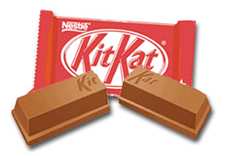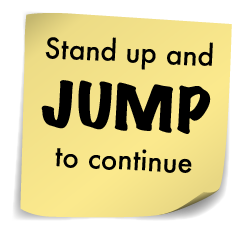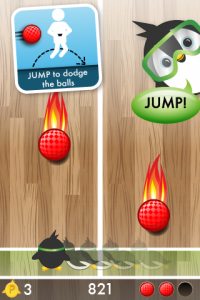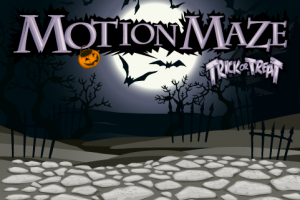by Annie | Nov 16, 2011 | Game Design
The new Pop & Dodge trailer is out! Check it...

by Annie | Nov 10, 2011 | Game Design, Psychology of Games
Growing up, I was tasked with practicing the piano a solid hour a day. Didn’t matter what I did within that hour, as long as I sat on that bench for 60 minutes. My parents figured that more practice time would naturally yield greater increases in musical skill. And this is true, to an extent. Experts now recommend that practice sessions, especially for young kids, are broken up into several short sessions a day. Three 10-minute sessions are better than one 30-minute session. Why? Because kids have short attention spans and need breaks. Shorter sessions come with greater focus and more purposeful practice. This is the same realization we’ve come to in our games. Sure, we can get people to try it out, but what’s more valuable is getting those people to come back day after day, several times a day. Retention is key. This is especially important for the types of games we’re making. In order to make any change in people’s physical activity habits, we have to keep them coming back. One play session that gets you out of breath is great, but it’s not a lifestyle change. To get people off the couch time and again, we have to facilitate habit-forming gameplay. How? We dig into our game design toolbox. Help players realize the importance of exercise, create compelling mechanics to get them moving, provide feedback to reinforce specific behaviors, and dole out rewards that matter. Easier said than done, but don’t you worry. We’ve got some ideas that will blow your socks off. Or at the very least, get you off that...

by Annie | Oct 28, 2011 | Game Design
The purpose of developing MotionMaze and Pop & Dodge within such rapid production cycles (2-3 weeks each) was to learn as much as possible as quickly as possible. And boy, have we learned some valuable lessons. Lesson 1: This is new. One of the most eye-opening experiences came at a playtest session we did with elementary school kids. We handed them the iPod, and most kids immediately sat down, tapping through the screens, then trying swipe and tilt. We realized that our main mechanics consist of unexpected controls, so we must spell e-v-e-r-y-t-h-i-n-g out so the player understands this new experience. Lesson 2: Give people a reason to jump. People like to play games sitting down. It’s become the norm, and frankly, after a long day, who wants to have to do physical activity to play a game? The game has to be playable on a basic level without physical controls but provide an added layer of powerful incentives to lure the player to get out of their comfort zone and move around. If you tell a player to jump, they might do it once or twice, quickly getting bored or tired. If you provide motivation to jump, players will stay on their feet and soon forget they’re actually jumping. Lesson 3: Make sure it works. Duh, right? Well, with physical activity, movement detection isn’t always reliable. Everyone moves differently and interacts with iDevices in different ways. After going through rounds of testing full of over- and under-registered movement, we’ve realized the immense value of creating reliable movement detection. Players expect it, so we should be able to deliver....

by Annie | Oct 27, 2011 | Game Design
We released Pop & Dodge on the App Store about a week ago. No marketing, no launch parties, just put it out there. The result? Pretty much as expected, Pop & Dodge is nowhere to be found on any featured or top 25 lists. In the wake of the release, we’ve been doing a lot of marketing catch up work, submitting the game to different blogs and review sites. A few, including Tech Vibes, have agreed to post reviews. But how much will that help in getting our game out there? According to the lessons learned from other indie app developers, likely not much. It takes high production values, lots of content, and a wickedly good game to sustain the buzz it takes to keep people coming back to your game. And with our 3-week production cycle, we just didn’t quite make it there. However, this is just the beginning. We’ve learned a lot from MotionMaze and Pop & Dodge, about gameplay, tech requirements, and our market. We have a firmer grasp on our goals and limitations and take our lessons with us into our next...

by Annie | Oct 24, 2011 | Game Design
If you liked MotionMaze, you’re going to love MotionMaze: Trick or Treat. This time, you play as Boo the Ghost, picking up candy corn treats as you make your way through graveyard mazes. This Halloween version of MotionMaze includes new graphics, 96 new mazes, achievements, and GameCenter support. Check it out...

by Annie | Oct 20, 2011 | Game Design
I’m going to take a wild guess that you like penguins. I know, it’s a bit presumptuous of me, but really. How can you not love flightless waddlers perpetually dressed in tuxes? And while I’m at it, I’m also going to assume that you possess some fondness, however minute, for the game of dodgeball. Add them up and what do you get? Pop & Dodge. Pop & Dodge is a physical activity game in which you stand up and jump to move Beeker the Penguin side to side to avoid getting hit by oncoming dodgeballs. Time your jumps just right, and you can also pick up coins and powerups along the way. Have an iPod, iPad or iPhone? Go try it out now, and let us know what you think!...





